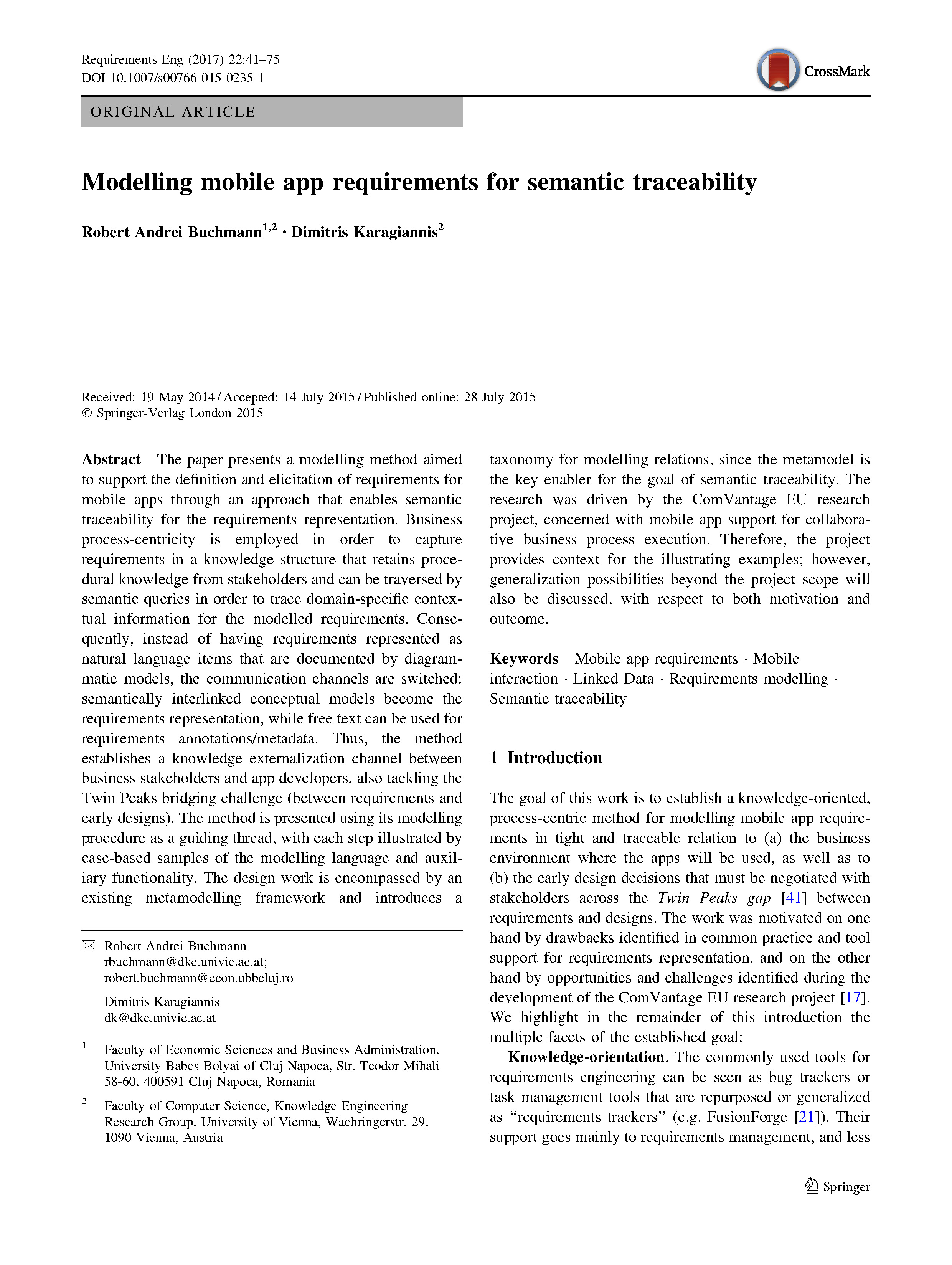|
|
|
Buchmann, R.A. & Karagiannis, D. (2017) Requirements Engineering [Info Economics, Q2]
Autor:
Ovidiu Ioan Moisescu
Publicat:
02 Septembrie 2021
Buchmann, R.A. & Karagiannis, D. (2017) Modelling mobile app requirements for semantic traceability. Requirements Engineering, 22(1), 41-75.
DOI: https://doi.org/10.1007/s00766-015-0235-1
✓ Publisher: Springer
✓ Categories: Computer Science, Software Engineering; Computer Science, Information Systems
✓ Article Influence Score (AIS): 0.538 (2017) / Q2 in all categories
Abstract: The paper presents a modelling method aimed to support the definition and elicitation of requirements for mobile apps through an approach that enables semantic traceability for the requirements representation. Business process-centricity is employed in order to capture requirements in a knowledge structure that retains procedural knowledge from stakeholders and can be traversed by semantic queries in order to trace domain-specific contextual information for the modelled requirements. Consequently, instead of having requirements represented as natural language items that are documented by diagrammatic models, the communication channels are switched: semantically interlinked conceptual models become the requirements representation, while free text can be used for requirements annotations/metadata. Thus, the method establishes a knowledge externalization channel between business stakeholders and app developers, also tackling the Twin Peaks bridging challenge (between requirements and early designs). The method is presented using its modelling procedure as a guiding thread, with each step illustrated by case-based samples of the modelling language and auxiliary functionality. The design work is encompassed by an existing metamodelling framework and introduces a taxonomy for modelling relations, since the metamodel is the key enabler for the goal of semantic traceability. The research was driven by the ComVantage EU research project, concerned with mobile app support for collaborative business process execution. Therefore, the project provides context for the illustrating examples; however, generalization possibilities beyond the project scope will also be discussed, with respect to both motivation and outcome.

inapoi la stiri  vezi evenimentele
vezi evenimentele  home
home 
|